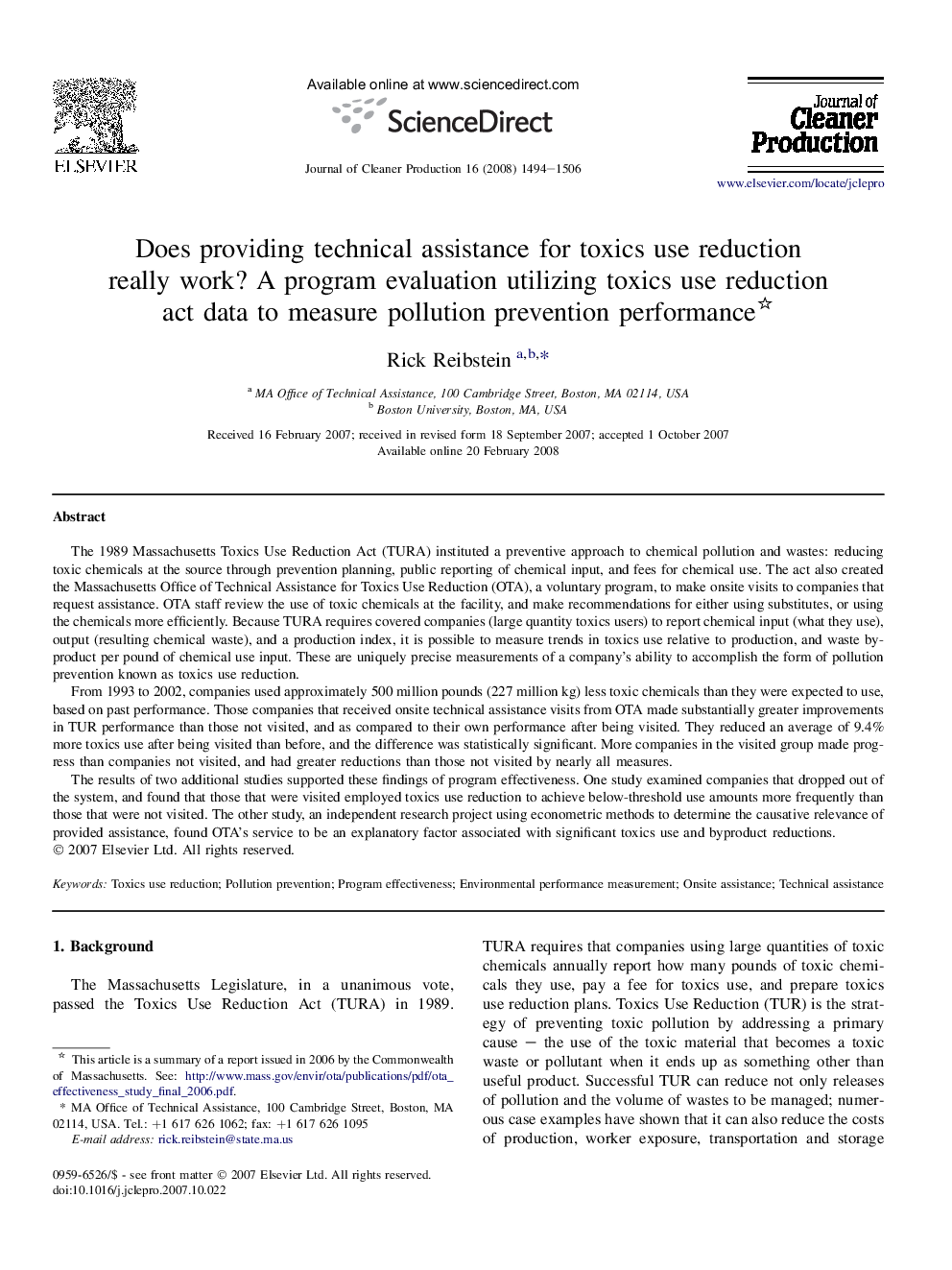| Article ID | Journal | Published Year | Pages | File Type |
|---|---|---|---|---|
| 1747076 | Journal of Cleaner Production | 2008 | 13 Pages |
The 1989 Massachusetts Toxics Use Reduction Act (TURA) instituted a preventive approach to chemical pollution and wastes: reducing toxic chemicals at the source through prevention planning, public reporting of chemical input, and fees for chemical use. The act also created the Massachusetts Office of Technical Assistance for Toxics Use Reduction (OTA), a voluntary program, to make onsite visits to companies that request assistance. OTA staff review the use of toxic chemicals at the facility, and make recommendations for either using substitutes, or using the chemicals more efficiently. Because TURA requires covered companies (large quantity toxics users) to report chemical input (what they use), output (resulting chemical waste), and a production index, it is possible to measure trends in toxics use relative to production, and waste byproduct per pound of chemical use input. These are uniquely precise measurements of a company's ability to accomplish the form of pollution prevention known as toxics use reduction.From 1993 to 2002, companies used approximately 500 million pounds (227 million kg) less toxic chemicals than they were expected to use, based on past performance. Those companies that received onsite technical assistance visits from OTA made substantially greater improvements in TUR performance than those not visited, and as compared to their own performance after being visited. They reduced an average of 9.4% more toxics use after being visited than before, and the difference was statistically significant. More companies in the visited group made progress than companies not visited, and had greater reductions than those not visited by nearly all measures.The results of two additional studies supported these findings of program effectiveness. One study examined companies that dropped out of the system, and found that those that were visited employed toxics use reduction to achieve below-threshold use amounts more frequently than those that were not visited. The other study, an independent research project using econometric methods to determine the causative relevance of provided assistance, found OTA's service to be an explanatory factor associated with significant toxics use and byproduct reductions.
